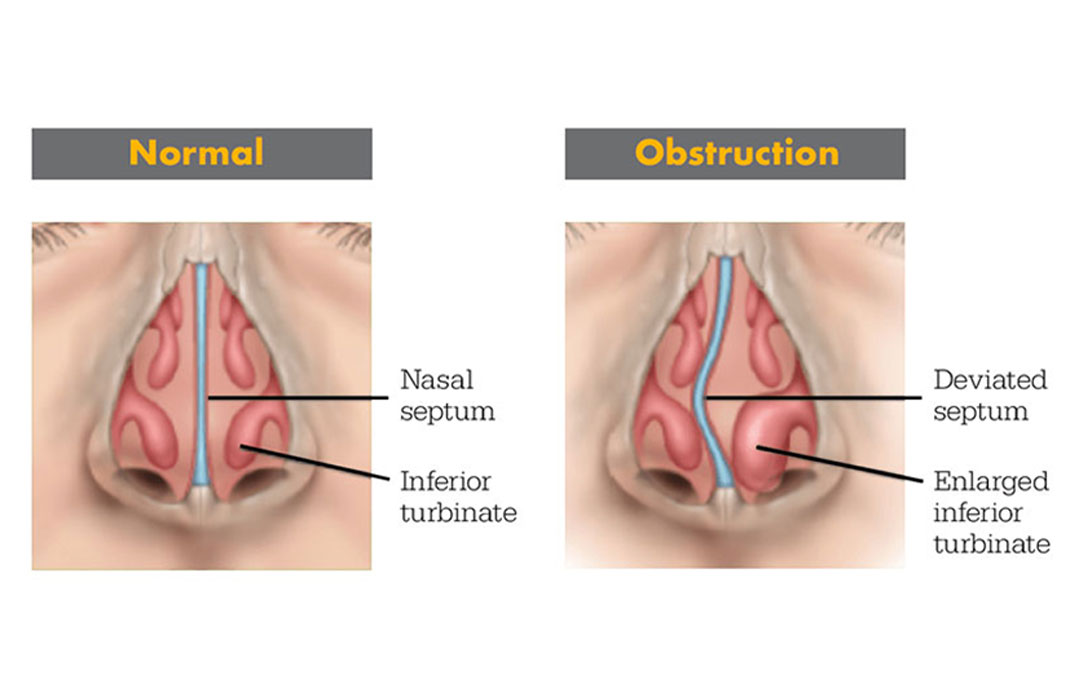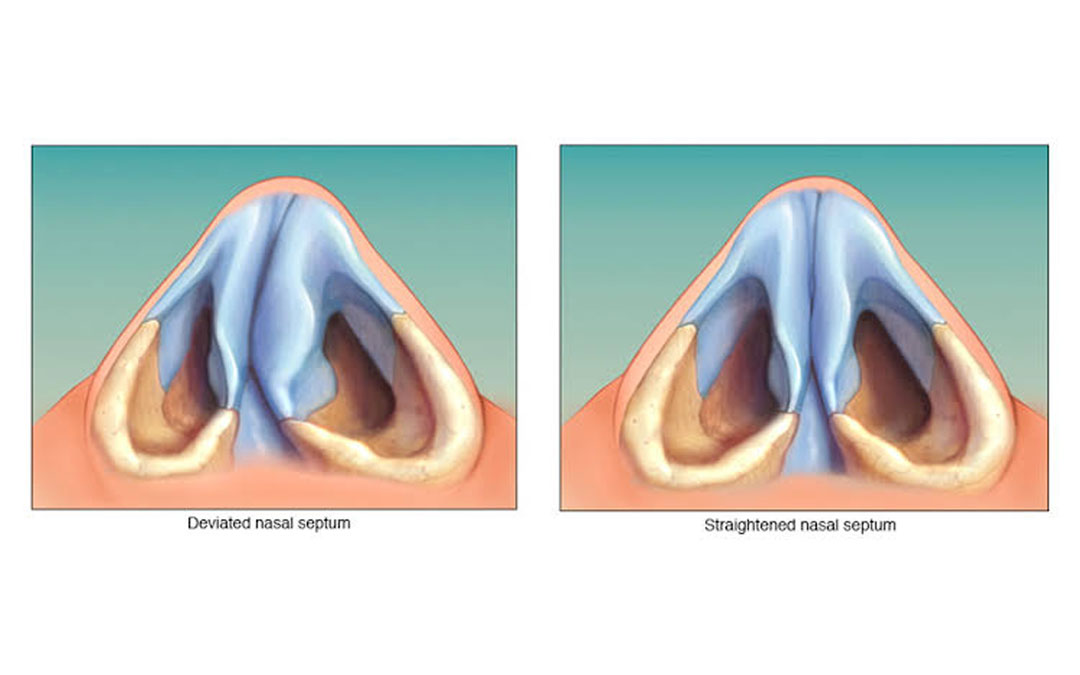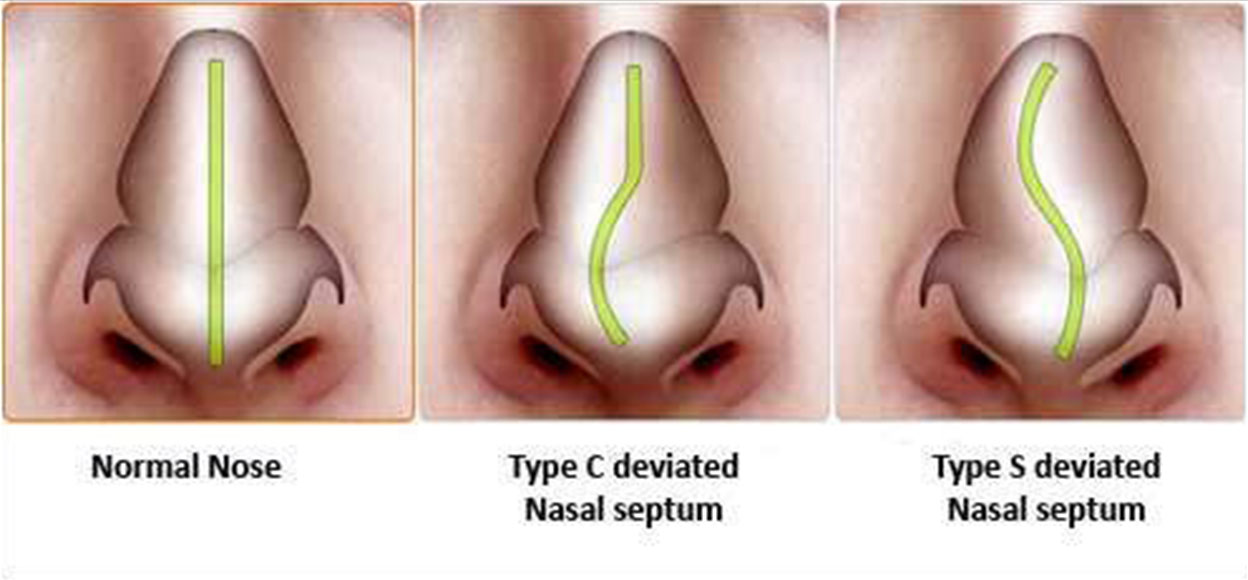Your nose consists of a cavity which is separated into two separate passages.
The partition wall between the two is called the nasal septum and is made of bone & cartilage. Usually the septum is straight and in the middle of the nose.


Usually the septum is straight and in the middle of the nose.
If the septum is bent or deviated, it causes narrowing of one or both of the passages of the nose. This can make it hard to breathe through the nose.
Blockage of the nose can interfere with drainage of mucus from the sinuses, leading to sinus infections, and facial pain and headaches.

Treatment varies according to the patient’s situation and grade of nasal obstruction and is usually provided after a consultation and thorough clinical evaluation.
Asymptomatic DNS requires no treatment.
In mild deviations of nasal septum, the symptoms can be relieved by prescribed medication.
In cases where there is severe deviation of the nasal septum and when medication does not help, your doctor may suggest going in for a surgical procedure, called a septoplasty to improve your breathing.
It is an operation performed to straighten the bent nasal septum
The operation is done through your nose with endoscopes using small custom-made instruments, with no cuts or scars on the face.
Detailed information regarding the procedure and post-procedure care will be given after consultation.
In some cases a rhinoplasty is combined with a septoplasty, to help improve the appearance and function of the nose.
Functional Rhino-Septoplasty:
Some patients with DNS will require a combination rhinoplasty for providing optimum functional results. For example, a deviated nasal septum with a crooked nose
Aesthetic Rhino-Septoplasty:
In some cases, the patient may also elect to combine a rhinoplasty, or a nose job, with a septoplasty, to help improve the appearance of the nose.